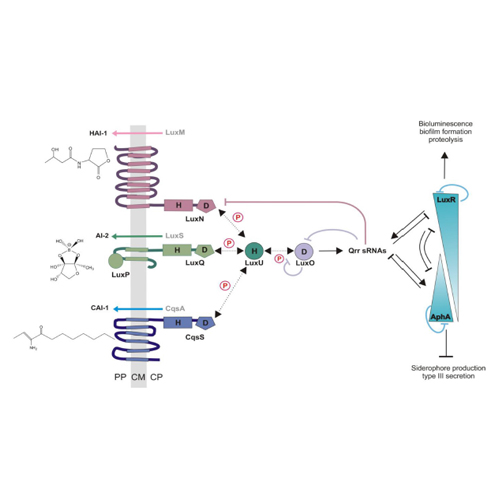The phosphorylation flow of the Vibrio harveyi quorum sensing cascade determines levels of phenotypic heterogeneity in the population
09-Mar-2015
Journal of Bacteriology, 2015, doi: 10.1128/JB.02544-14, Volume 197, Number 10 published on 09.03.2015
Journal of Bacteriology, online article
Journal of Bacteriology, online article
Quorum sensing (QS) is a communication process enabling a bacterial population to coordinate and synchronize specific behaviors. The bioluminescent marine bacterium Vibrio harveyi integrates three autoinducer (AI) signals into one quorum sensing cascade comprising a phosphorelay involving three hybrid sensor kinases, LuxU, LuxO, a Hfq/smallRNAs switch, and the transcriptional regulator LuxR. Using a new set of V. harveyi mutants lacking genes of the AIs synthases and/or sensors, we assayed the activity of the quorum sensing cascade at population and at single cell levels, with a specific focus on signal integration and noise levels. We found that the ratios of kinase to phosphatase activities of the three sensors and hence the extent of phosphorylation of LuxU/LuxO is not only important for the signaling output, but also for the degree of noise in the system. The pools of phosphorylated LuxU/LuxO per cells directly determine the amounts of sRNAs produced and consequently the copy number of LuxR, generating a heterogeneous quorum sensing activation at the single cell level. We conclude that the ability to drive heterogeneous expression of QS-regulated genes in V. harveyi is an inherent feature of the architecture of the QS cascade.











